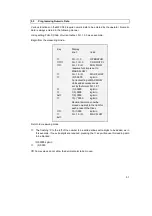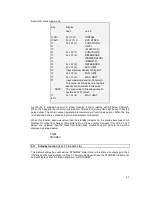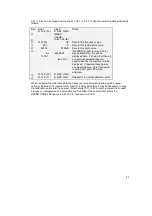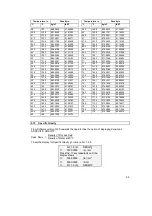
56
For these functions the output sends out a series of pulses where each pulse represents a fixed
mass or volume. So, for example, to set the converter for 1 pulse equal to 20g, proceed as
follows :
Begin from measuring mode
Menu Fct. 3.4.3 can now be used to set the minimum pulse width,
τ
, in the range 0.4 to
500 ms.
τ
τ
In this way the operator can be sure that the pulses produced by the impulse output will never
be shorter than the specified width.
When setting the pulse width,
τ
, and the mass (or volume) per pulse, Q, the operator
should take into account the maximum flow rate,
Flow
max
, he expects through the meter,
such that:
Flow
max
<
Q
2
τ
where:
Flow
max
is in units g/s (or cm
3
/s)
Q is in units of g (or cm
3
)
τ
is in units of seconds
If
Flow
max
exceeds the above, limit saturation will occur and pulses will be lost and any external
counter connected will under-read. It is possible to generate warnings of saturation in one of
two ways:
Key
Display
line 1
line 2
→↑↑
Fct. (3).0.
INSTALL.
→↑↑↑
Fct. 3.(4).0.
PULS.OUTP. P
→
Fct. 3.4.(1).
FUNCTION P
→
(OFF)
↑
(MASS FLOW)
:
(TOTAL MASS)
:
(DENSITY)
:
(TEMPERAT)
:
(VOLUME.FLOW)
:
(VOL. TOTAL)
↑
(DIRECTION)
↵
Fct. 3.4.(1).
FUNCTION P
↑
Fct. 3.4.(2).
PULSE/MASS
→
1.000
1 P. = (KG)
Current setting 1kg per pulse
4x
↑
1.000
1 P. = (g)
→
(0)1.000
1 P. = g
↑↑
(2)1.000
1 P. = g
→
9x
↑
2(0).000
1 P. = g
↵
Fct. 3.4.(2).
PULSE/MASS
















































